

UI Design vs. UI Development
source link: https://www.uxpin.com/studio/blog/ui-design-vs-ui-development/
Go to the source link to view the article. You can view the picture content, updated content and better typesetting reading experience. If the link is broken, please click the button below to view the snapshot at that time.

UI Design vs. UI Development – What’s the Difference?
There are many software and web development roles and responsibilities–from initial concept to design and delivery, QA, and lifecycle management. UI design and UI development are two crucial roles that impact how users engage and interact with a user interface.
This article compares the practice of UI design vs. UI development, the people behind these roles, and how they work together to deliver digital products.
UXPin is a code-based design tool helping UX/UI designers and engineers collaborate better to deliver high-quality products to your customers. Sign up for a free trial to experience code-based design from UXPin.
What is UI Design?
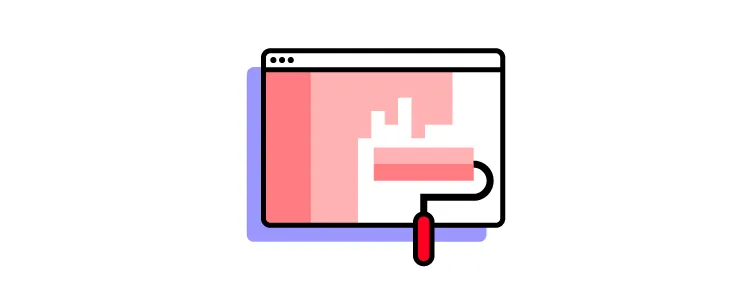
UI design (User Interface Design) is the process of designing user interface elements, layouts, and interactions–everything users see and interact with. These elements include images, animations, sliders, text fields, buttons, etc. Like user experience design, UI design decisions are based on user needs and testing.
UI Designer Skills & Responsibilities
UI designers are responsible for the UI design process. Their role includes:
- Product aesthetics: branding, visual design
- Research: design research, user analysis
- Testing: UI prototyping (high-fidelity prototyping)
- Design: wireframes, mockups, interaction design, animations, viewport layouts (responsive design)
UI Designer Qualities & Skillset
- Visually creative
- Web design
- Graphic design
- Design principles and design thinking
- Interested in visual design
- User journeys and personas
- User research
- Typography
- Balances form with function
- Looks at user interaction and behavior
- Task orientated
UI Design Process
UI designers follow the same design thinking process as other UX professionals but complete different activities within the framework:
- Empathize: focuses on the user’s environment, movements, and actions
- Define: focuses on each step users need to take to achieve their goals
- Ideate: looks at the elements and components users will need to navigate a product
- Prototype: designs mockups and interactivity for high-fidelity prototypes
- Test: tests how users interact with the product and ask practical questions
Further reading: UX vs. UI Design – The Differences You Need to Know.
What Software does a UI Designer Use?
UI designers generally use the same tools and software as other UX designers. These tools allow them to design, prototype, and test user interfaces.
The goal for any UI designer is to create high-fidelity prototypes that look and function like the final product. Code-based design tools like UXPin have revolutionized how UI designers prototype and test digital products.
Some of UXPin’s advanced prototyping features include:
- States: Create multiple states for a single component with separate properties for interactions and system changes.
- Conditional Interactions: Create dynamic user experiences with Javascript-like “if-then” and “if-else” rules that respond to user and system actions.
- Variables: Store user inputs and take actions based on that data–like displaying a customized welcome message from the user’s name input.
- Expressions: Write Javascript-like functions that perform complex tasks, like form validation, computational formatting, and more.
Discover these and more advanced UXPin features with a free 14-day trial–no payment details necessary!
What is UI Development?
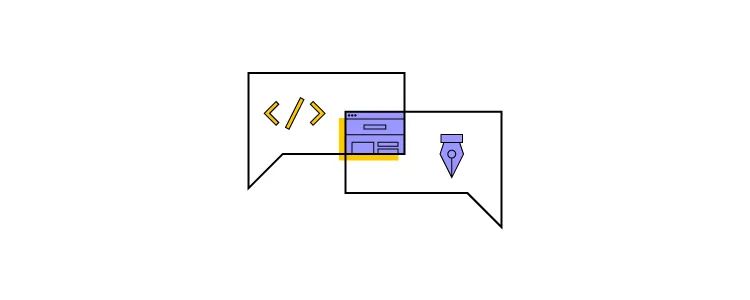
UI development is the process of programming client-facing interfaces. Like UI design, the UI development process includes writing code for images, animations, sliders, text fields, buttons, etc.
UI Developer Skills & Responsibilities
Depending on the product and org structure, the UI development role might fall on a front-end developer, UX engineer, or full-stack engineer. Their responsibilities include (these will vary depending on the engineering team’s structure):
- UI component development
- UI maintenance
- Styling architecture
- Implementation
- Technical feasibility
- Backlog management
- Performance
- Query architecture
- Search engine optimization
Front-End Development vs. Back-End Development
Engineers divide programming into two separate disciplines, front-end, and back-end development.
- Front-end development: Focuses on developing “client-facing” interfaces using HTML, CSS, and Javascript.
- Back-end development: Write server-side code to connect front-end interfaces to databases, APIs, authentication, etc. Some programming languages include Java, Ruby, Python, and Javascript, to name a few.
Further reading: Front-End vs. Back-End: What’s the Difference?
What Software does a UI Developer Use?
Like any engineer, UI developers use an integrated development environment (IDE) to examine and write code. Modern IDEs feature various extensions to interface with engineering tools like Git, package managers, repositories, APIs, etc.
Further reading: The 7 Essential Tools for Frontend Web Development.
UI Design vs. UI Development
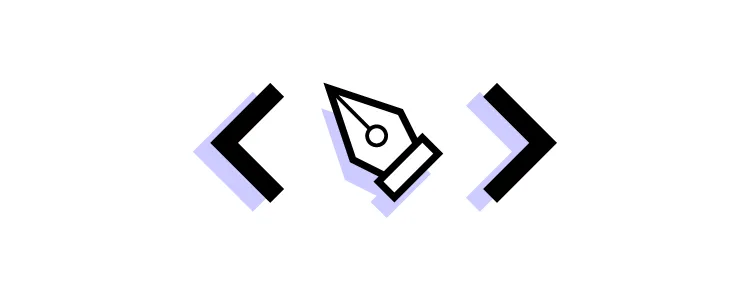
With UI design and UI development defined, it’s clear to see these disciplines appear on opposite ends of the software development process. UI design happens during the design process, while UI development occurs during the engineering process.
While these are separate disciplines, UI designers and UI engineers must work together to deliver a successful final product.
It’s important to note that not every organization has a UI designer and UI engineer role. Here are some positions that might fulfill these UI roles and responsibilities:
- UI design: UX engineer, visual designer, graphic designer
- UI development: Front-end developer, UX engineer/UX developer, full-stack engineer
How UI Designers and UI Developers Work Together
Here is a typical workflow demonstrating how a UI designer and UI developer would collaborate on a project:
- UI designers start a design project with various forms of UX research to understand users, competition, the market, product, etc. They use user-centered design processes to understand the problem from a user’s point of view.
- UI designers will meet with UI developers early in the design process to discuss technical limitations, design handoff procedures, and documentation requirements.
- UI designers work with other UX designers to design, prototype, and test user interfaces, layouts, and components. In some instances, the UI developer might collaborate with the design team to build basic code prototypes to test complex UI components.
- Once the design process is complete, UI designers prepare prototypes and documentation for the design handoff.
- UI designers and UI developers might meet to discuss designs and ensure engineers understand everything correctly during the design handoff process.
- UI developers work with the rest of the engineering team to convert designs into functioning code.
- UI designers work with the design and product teams to complete the QA (quality assurance) process to ensure the final release meets design specifications.
The Importance of UI designer-UI developer collaboration
Modern software development relies on exceptional UI design and development.
Designers ensure the product meets users’ needs and thoroughly test user interfaces and UI components to ensure they meet usability and accessibility standards. Without this prototyping and testing phase, usability issues impact the product, resulting in a poor user experience resulting in avoidable costs on multiple fronts–customer service, rework, losing customers, etc.
UI developers also play a crucial role in delivering successful software releases. They must ensure the final UI meets design specs and test code for bugs and performance. They’re also responsible for managing code, including updates to packages, APIs, security, etc., to ensure the product maintains its integrity and consistency over time.
To achieve this, designers and engineers must collaborate throughout the software development process–which can be challenging in large organizations where silos and poor communication are common.
UI designers and UI developers often work with DesignOps and DevOps to help bridge the gap between these disciplines to improve operational processes and collaboration.
Better Designer-Developer Collaboration With UXPin Merge
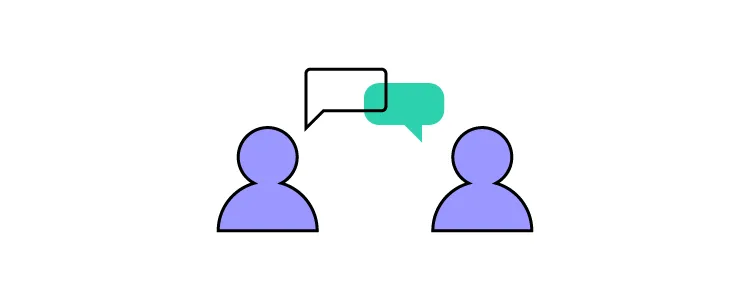
The Drift Challenge
One of the challenges designers and engineers face is that they speak different languages.
- Designers = image-based static mockups and prototypes
- Engineers = code, browsers, operating systems, databases, etc.
Without in-depth knowledge and experience of one another’s disciplines, it’s hard for designers and programmers to understand the other’s limitations, constraints, and other challenges. Bridging that gap is crucial for organizations to deliver products successfully, on time, and on budget.
The Code-Based Solution
UXPin Merge has revolutionized the traditional UX workflow with a code-based design solution allowing orgs to sync a component library from a repository to UXPin’s editor, so designers build prototypes using fully functioning UI elements and components.
Merge components retain exactly the same properties as those in the repository, including interactivity, so designers can simply drag and drop to build UIs. Engineers can also set various props (for React or Args for Storybook) to allow designers to customize components in JSX or via UXPin’s Properties Panel. Any changes to these props render JSX, which engineers can copy/paste to begin development.
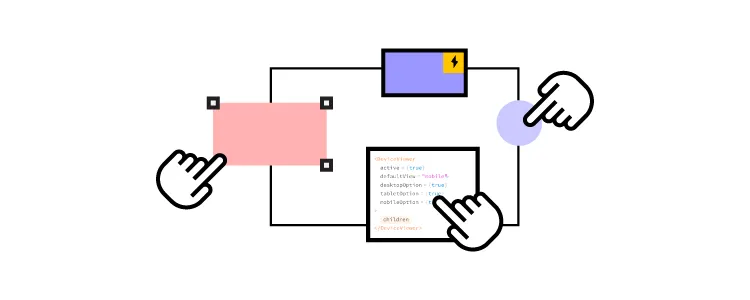
This Merge-powered workflow enhances collaboration and understanding between UI designers and UI developers because they’re speaking the same language with the same constraints–a truly single source of truth for your org’s component library.
UXPin has also recently announced the upcoming release of Merge Component Manager–a tool that reduces developer involvement in importing and managing coded UI components. Less reliance on engineers means designers can get up and running with Merge much faster.
“It used to take us two to three months just to do the design. Now, with UXPin Merge, teams can design, test, and deliver products in the same timeframe. Faster time to market is one of the most significant changes we’ve experienced using Merge.” Erica Rider, UX Lead EPX @ PayPal
Discover how UXPin’s Merge technology can revolutionize your design processes with a free 14-day trial. You can explore Merge’s functionality via our MUI library integration and other advanced UXPin features.
Recommend
About Joyk
Aggregate valuable and interesting links.
Joyk means Joy of geeK